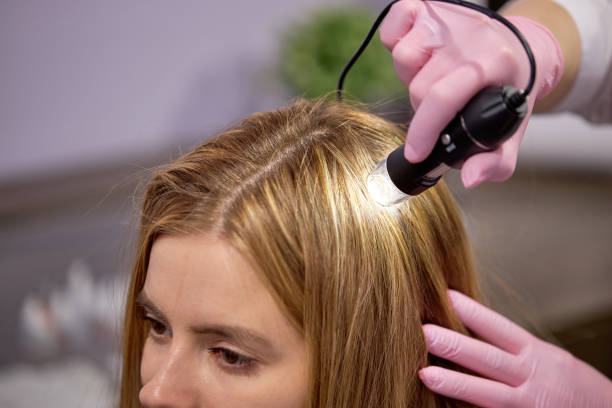Introduction: Real Hair Transplant Transformations You Can’t Ignore
When it comes to considering a before and after hair transplant, success stories play a crucial role in setting realistic expectations. These real-life transformations provide invaluable insights into what is possible with the right procedure, proper care, and a skilled surgeon. For those on the fence about hair restoration, these success stories serve as powerful reminders that hair transplants can bring about life-changing results. They are not just about regaining hair; they’re about restoring confidence and self-esteem.
What Makes a Hair Transplant Successful?
A successful hair transplant isn’t just about filling in bald spots; it’s about delivering natural, long-lasting results. Key factors influence the success of a hair transplant, starting with the patient’s unique hair loss pattern and the quality of their donor hair. Healthy, strong donor follicles increase the chances of achieving the desired density and coverage. The technique used—whether it’s Follicular Unit Extraction (FUE) or Follicular Unit Transplantation (FUT)—also plays a significant role in the final outcome. The procedure itself is an art, with the surgeon’s expertise in placing each follicle for a seamless and natural-looking hairline being a critical element.
Other factors such as patient age, scalp condition, and lifestyle choices also contribute to the success of the transplant. When all these elements align, the transformation can be remarkable, making the before and after hair transplant results both impressive and long-lasting.
From Thin to Thick: Incredible Hair Transplant Before and After Stories
One of the most compelling reasons people turn to hair transplants is the drastic difference they can make in an individual’s appearance. The before and after hair transplant stories that are often shared highlight stunning transformations—from a receding hairline to a thick, youthful hairline that restores confidence. These success stories can be striking, particularly when patients with advanced baldness are able to regrow a full head of hair.
Take, for instance, individuals who’ve experienced years of thinning or receding hair. After a transplant, many report regaining a youthful, fuller appearance that changes the way they feel about themselves. Each transformation is unique, with some people achieving a subtle thickening of the hair while others experience complete coverage that significantly alters their profile.
However, it’s important to understand that the before and after hair transplant results vary. Factors like the extent of hair loss, hair type, and technique used all contribute to the final outcome. For some, the transformation is almost miraculous, while for others, additional sessions or treatments may be necessary for optimal results.
The Emotional Impact: How Hair Restoration Changes Lives
Beyond the physical changes, the emotional impact of a successful hair transplant is undeniable. Hair loss can be a deeply personal issue, affecting self-confidence and even social interactions. Many who experience hair thinning feel as though they are aging prematurely, which can lead to a decrease in self-esteem and even withdrawal from social activities.
The before and after hair transplant stories that truly resonate often focus on how patients’ lives change emotionally after seeing results. Confidence is restored, and many feel a newfound sense of freedom and empowerment. The transformation doesn’t just stop with hair growth—it often extends to other aspects of life, including improved relationships, career opportunities, and a more positive outlook on the future.
Psychological studies have shown that improving one’s appearance can directly impact mental well-being. For many, a hair transplant is not just a cosmetic improvement but a life-altering decision that has lasting effects on their emotional health.
Common Challenges in the Hair Transplant Journey
Although hair transplants have high success rates, they aren’t without challenges. Even in before and after hair transplant stories, patients often encounter a few hurdles along the way. One of the most common issues is post-procedure shedding. After the initial transplant, the newly transplanted hair typically falls out within a few weeks, which can cause anxiety for patients. This is a natural part of the healing process, but it can be disheartening if the progress isn’t immediately visible.
Another challenge is the healing period. Swelling, redness, and mild discomfort are typical during the first few days. However, these effects subside as the scalp heals. For some, the recovery period may feel lengthy, but most patients start noticing new hair growth within 3-6 months.
Success stories often highlight how patients navigated these challenges. Those who adhered to the post-operative care instructions and remained patient during the healing process typically see the most impressive before and after hair transplant results. It’s important to recognize that while setbacks are common, they don’t diminish the long-term success that most people experience.
Is a Hair Transplant Right for You? Key Takeaways from Success Stories
As inspiring as before and after hair transplant stories can be, they are not a one-size-fits-all solution. Not everyone is an ideal candidate for a hair transplant, and understanding who benefits the most is essential. Individuals who have stable hair loss patterns and sufficient donor hair typically experience the best results. Those with extensive baldness or medical conditions like alopecia may need to explore alternative solutions or consider multiple transplants to achieve desired results.
Success stories often emphasize the importance of a thorough consultation with a qualified surgeon. Through this consultation, patients can assess whether they are suitable candidates and what expectations are realistic for their unique situation. Understanding the procedure, the recovery process, and the long-term maintenance required is key to making an informed decision.
Ultimately, before and after hair transplant success depends on several factors—starting with choosing the right procedure, following post-operative instructions, and having a realistic approach to the outcome. The lessons learned from these success stories offer invaluable guidance for those considering a hair transplant as a viable solution to hair loss.
Conclusion
The before and after hair transplant success stories provide much more than just aesthetic transformations—they are testaments to the emotional and psychological impact of regaining one’s hair. These stories inspire hope and offer realistic expectations for those struggling with hair loss. While the journey involves challenges, the potential rewards are immense. With the right mindset, proper care, and expert guidance, individuals can experience a truly transformative change that goes beyond hair restoration to enhance every aspect of their lives.







0 Comments